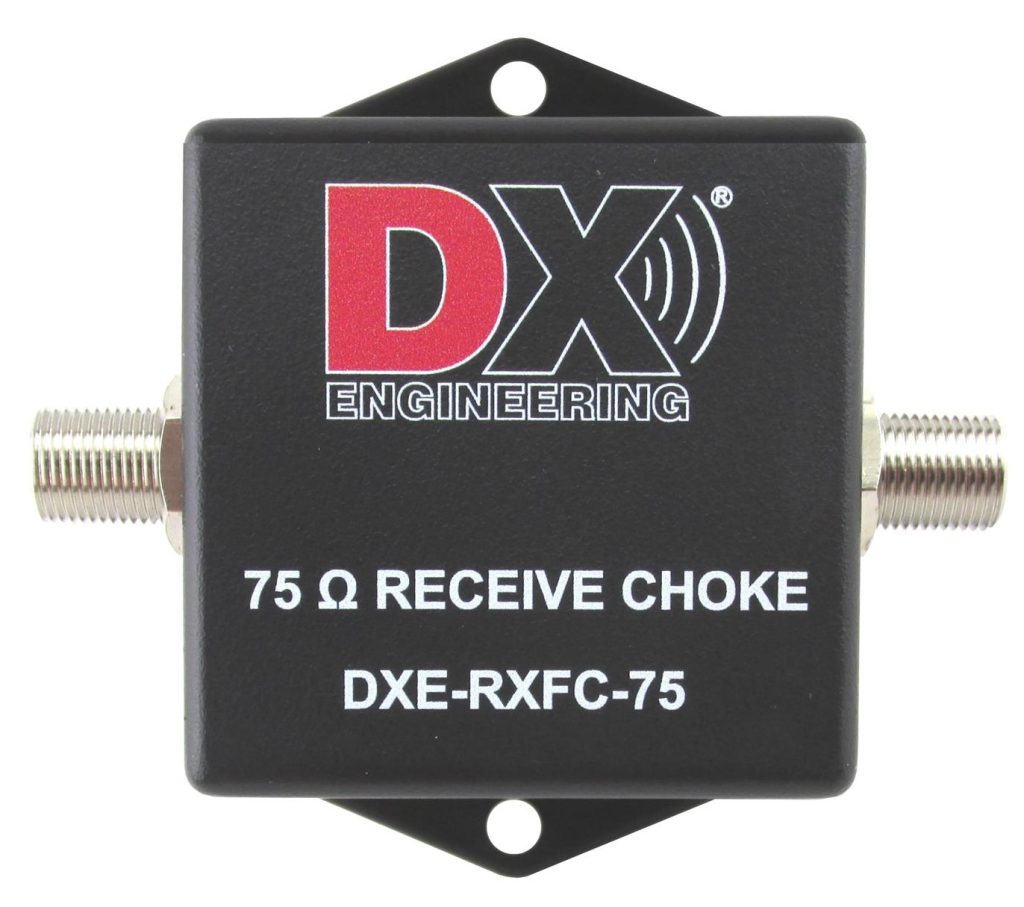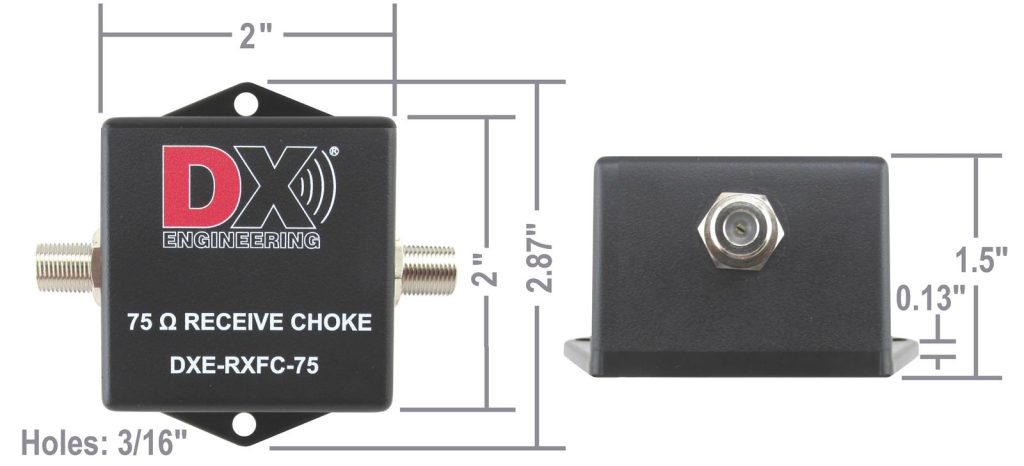Premiered at Dayton Hamvention® 2024, the DX Engineering High CMI (Common Mode Impedance) Receive Feedline Choke (DXE-RXFC-75) achieves exceptionally high isolation between the input and output connector shields to effectively block common-mode RF noise and unwanted signals that collect on 75-ohm receive antenna feedlines. The choke—the result of ongoing work by DX Engineering’s research and development team—makes an ideal choice for typical and advanced low-band receive antenna systems.
Before we get into the nuts and wires of the DXE-RXFC-75, you may be asking, “What exactly is a common-mode current and why is it harmful?
For our answer, we turn to Ward Silver, N0AX, who explains it in his OnAllBands article, “Baluns and Common-Mode Impedance: How Much is Enough?”
“In this article, common-mode current, or CMC, means current flowing on the outside of a coaxial cable shield. Because of the skin effect, the inside and outside surfaces of the shield can carry different currents. Fields from current on the outside (the common-mode current) are not canceled by fields from an opposing current as they are for the shield and center conductor currents inside the coax. This means common-mode current will radiate like any current on a wire, and external fields picked up by the shield from the transmitted signal or from other signals or noise will create common-mode current on the shield.”
Ward Silver, N0AX

So why block CMC? As the article above notes, blocking CMC reduces re-radiation that distorts the radiation pattern and reduces re-radiation near equipment that can cause RFI.
About the DXE-RXFC-75 High CMI Receive Feedline Choke
Covering 100 kHz through 30 MHz, the DXE-RXFC-75 Receive Feedline Choke exhibits very high common mode impedance (see specs below), typically over 7,500 ohms across the 160, 80, and 40 meter bands. It features DC pass capability up to 700 mA at 13.8VDC, with extremely low SWR and negligible insertion loss.
The DXE-RXFC-75 has a nominal impedance of 75 ohms with Type-F connectors to prevent accidental connection to transmitting equipment. The choke is built into a two-inch square plastic box, 1.5 inches deep, with non-directional input and output F connectors on opposite sides. It’s permanently sealed to prevent changes to the precisely adjusted components by physical shock or internal moisture. The top and bottom sides each have 7/16-inch flanges with 3/16-inch holes for mounting (hardware not included).

DXE-RXFC-75 High CMI Receive Feedline Choke Specs
Nominal Common Mode Impedance by Frequency (Approximate)
- 100 kHz – 1,250 ohms
- 200 kHz – 2,500 ohms
- 1.8 MHz – 8,000 ohms
- 3.8 MHz – 10,000 ohms
- 8.0 MHz – 8,000 ohms
- 21.0 MHz – 4,500 ohms
- 30.0 MHz – 2,500 ohms
Insertion Loss
- 0.1 dB at 1.8 MHz
- 0.2 dB at 7 MHz
- 0.4 dB at 30 MHz
VSWR: <1.25:1 maximum; 1.06:1 at 7 MHz, nominal
Some Things to Consider About the DXE-RXFC-75
- Receive feedline chokes do not reduce ambient or propagated RF noise that is received by the antenna, nor do they reduce RF noise in a receiver that is conducted by a power main or noise that originates inside a power supply.
- Low-noise receive antennas are traditionally located away from electrical wiring and other noise sources for improved signal-to-noise performance. However, local and propagated RF noise and other unwanted long, medium, and shortwave signals can energize the outside of the feedline shield. Installing a DX Engineering High CMI Receive Feedline Choke blocks the direct path for that RF noise to the feedpoint of a low-noise antenna, through the feedline shield connections between the station equipment and the receive antenna system.
- This choke should be placed at the antenna end of the feedline, at the receive array phasing unit, or remote switch end of the coaxial cable, or at both ends of very long receive antenna coax cable runs. Installed in line with the receive antenna feedline, it’s a passive device which requires no power and does require a direct ground connection. It should be installed on the long coaxial cable side of any ground connection.
- Receive feedline chokes cannot be used on the output of a transceiver. Transmitted RF energy will cause permanent damage to the DXE-RXFC-75.
Find more baluns, UNUNS, and feedline chokes—including DX Engineering’s top-of-the-line Maxi-Core® 20 baluns and chokes—at DXEngineering.com.

